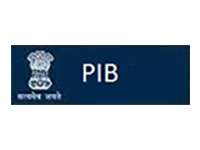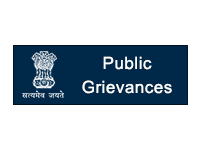(a). Objectives:
The objective of this programme is to improve the accuracy, reliability and range of weather forecasts. through (i) better understanding of atmospheric processes and their representation in numerical model, (ii) assimilation of data from all available platforms including satellites/radars and (iii) use of ensemble and multi-model ensemble techniques.
(b). Participating Institutions:
National Centre for Medium Range Weather Forecasting, Noida
(c). Implementation Plan:
- To increase temporal range and spatial resolution of the Global Forecast System. This will be achieved by developing and improving data assimilation techniques (especially 4D VAR and Ensemble Data Assimilation) to make use of data from Indian Observation Systems (both land and space based), particularly high resolution data from the DWR and AWS, and improving physical parameterization schemes with particular reference to cloud resolving schemes and radiation processes with respect to aerosols.
- Observation System Experiments (OSE) / Observation Simulation System Experiments. The experiments will be carried out for evaluation of an existing observing system, and to design new observing systems which would have an impact on model forecast. These activities are required to optimize the deployment of observation systems (land based and space based) and maximize the information extracted from the observations.
- Implementation of a dynamical Global Ensemble Forecasting system.
The short and medium range weather forecasts are very sensitive to the initial state of atmosphere from which the models begin their computations. Hence, many of the leading international centres use an ensemble prediction system which either use perturbed initial conditions and/or have a stochastic physics in the model for short and medium range weather prediction. Currently, in India ensemble prediction system is not being used operationally. Hence it is essential to start work on implementing ensemble prediction system. A state-of-the art global ensemble prediction system that is most suited for short and medium range weather prediction over Indian region.
This will involve:- Implementation of global ensemble prediction system of NCEP with 20 ensemble members at T190L28 during 2012-2013.
- Implementation of global ensemble prediction system of NCEP with 20 ensemble members at T254L42 (~50 km) during 2013-2014.
- Implementation of global ensemble prediction system of UKMO with 24 ensemble members at N216L70 during 2012-2013.
- Implementation of global ensemble prediction system of UKMO with 50 ensemble members at N320L70 (~60 km) during 2013-2015.
- Produce a regional reanalysis dataset for understanding the climate variability and climate change over South Asia. . This will generate refined description of the regional hydroclimate state (from 1979 till date) through assimilation of conventional observations as well as radiance and precipitation observations in numerical weather prediction model finally at 15km horizontal resolution.
- To implement a Coupled Ocean Atmosphere system and test its utility for week-2 forecasts. Implement an ocean data assimilation system to provide input to the ocean model component.
- Real-time seasonal prediction for monsoon. Development of calibrated probabilistic high-resolution seasonal prediction system.
- Real-time medium range MME prediction for monsoon.
- Development and improvement of methods for location specific forecasts including dynamical and statiscal approaches
- .Development and testing of new and novel applications like dust forecasting system, global transport of radioactive materials in the atmosphere etc.
Dust forecast system: Short-range (up to 72 hrs) forecast of dust aerosol parameters such as mass concentration, size distribution, Optical depth etc. at different levels in the horizontal resolution of 12 km or below, to be developed.
Transport model: (i) Trajectory forecast based on the requirement (ii) Global forecast of the different gases and aerosol.
UKMO-based dust forecast system will be implemented in 2012-13. Product development based on the dust model will be taken up in the year 2013-14. Simultaneously from 2012-13, work towards developing an aerosol forecasting system, which can be initially incorporated into the NCEP GFS system and subsequently in any other Indian model. It is expected to complete the first phase of this work in NCMRWF GFS by 2013-14. Development of aerosol assimilation system expected to be developed as an aerosol assimilation system by 2015-16.
A Lidar system to measure the vertical aerosol distribution (upto10 km) for validation of the model, (2012-13) is required. Measurements will be carried out during the entire plan period.
This work will be initiated with a latest chemistry-transport model. The transport model will be linked to NCMRWF model. Installation of the model, linked with NCMRWF forecast and experimental forecast: 2012-13. Product development 2013-14. - Utilization of New Satellite Data sets:Utilisationof new satellite data sets with a special emphasis on using Indian Satellite data, viz. INSAT 3D and Meghatropiques (MT)in the NCMRWF Data Assimilation Forecasting (DAF) system will be taken up.
Direct satellite radiance assimilation schemes are based on Fast Radiative Transfer Models (FRTM's) which are based on pre-computed coefficients specific to a particular sensor. These coefficients are computed from the Sensor Response Functions and thus depends on their make. Due to un-availability of these information most of Indian sensors are not supported by these FRTMs. Thus at the first instance it required to carry out development work with FRTM groups to include Indian satellite information. In the case of INSAT-AMV assimilation, the methodology for AMV calculations are to be fixed. Data, for a sufficient long period, from that fixed method will enable calculation of observational error and other statistics. Once these statistics are computed then the data can be assimilated. Most of major Global operational NWP centers are connected to the NOAA- NESIDS data distribution server and EUMETSAT. These two centers provide about 90% of global operational meteorological satellite data sets on near real time basis. NCMRWF has an access to EUMETSAT data sets through EUMETCAST broadcast. This broadcast is being received through Space Application center, Ahmedabad. But it has limited access to NESDIS data distribution server through internet. It is required to establish direct optical fiber link with NESDIS so that the data can be received in faster and reliable mode. By making this arrangement more satellite data will be available resulting in two to three hours time gain in the GFS model runs at NCMRWF and IMD.
The work will start after getting access to simulated MT data and completed after experimenting with one year real time data. With this experience, NCMRWF will be able to include INSAT-3D radiance data independently in the next one year. Monitoring of INSAT AMV wind quality and representativeness will be carried and will be included in assimilation after achieving satisfactory quality mark. - Daily Rainfall Analysis for Merged Satellite Gauge Gridded Product: To prepare daily gridded merged gauge-satellite rainfall data for Indian region
Reliable daily rainfall data at various resolution are required for model validation, model development and process studies. Rainfall estimates from satellite, observations from rain-gauges, AWS and ARGs are available for India and neighboring region. These data have to be suitably combined to produce gridded rainfall datasets at various resolution for various applications. Quality control of regular gauge, AWS and ARGs have to be developed. Then satellite rainfall data from microwave, IR and other channels have to be integrated to make a single best satellite product. Several rainfall analysis algorithms are being proposed. Out of these a suitable one for monsoon has to be finalized. A near-real time rainfall analysis algorithm will be available for operational use. Historical and current daily data will be available. A quality control procedure of gauge, AWS, ARG will be available. Several new products based on this data can be developed for water management and water resources applications.
NCMRWF will work with IMD and IITM for a inter-comparison of the rainfall analysis algorithms. Joint work with groups working on rainfall analysis at NOAA, UK universities and BMRC Australia will be helpful. - Improved prediction of severe weather systems: Assimilation of DWR data for improved forecasting of local storms and rainfall. Advanced Hurricane WRF (AHW) for track and intensity prediction of tropical cyclones.
Improved prediction in polar regions
High resolution DWR data available for assimilation in the models. The quality of the data and the impact of the assimilation in the models will be understood only after extensive experimentation. With the present modelling framework the tropical cyclone forecast tracks feature large errors. A complete modelling framework for improved prediction of tropical cyclone track and intensity should include suitable tropical cyclone relocation (to correct the initial position of the cyclone in the first guess) and a coupled ocean model(simple slab ocean to represent the air-sea interaction). High resolution modelling and assimilation system - for improved forecasting of local storms and rainfall. for improved prediction of track and intensity of tropical cyclones. Improved predictions over polar regions
This project will be implemented in two phases.
Setting up of the model configuration and real-time and hindcast model integrations and verification. Development of DWR data quality control procedures.Real-time model integration and verification. Development background error statistics for inclusion in the assimilation system. Development of DWR data quality control procedures.Real-time model integration and verification. Revised estimate of background error statistics for inclusion in the assimilation system. Assessment and review of strategy.Real-time model integration and verification. Revised estimate of background error statistics for inclusion in the assimilation system. Assessment and review of strategy.Real-time model integration and verification. Final review and report. - Observing System Simulation Experiments (OSSE): Achieve the cost-effective deployment of observing systems and design a suitable observation network, relative impact of various observing systems on predictions of different weather systems affecting India .
Scenario of observing network is changing continuously worldwide, at the same time data assimilation and forecast models are also getting sophisticated day by day. Leading NWP centres of the world carry out OSEs regularly to see the changes of the relative importance of observing systems in this changing scenario. OSSEs are planned well before deployment of new observing systems. In India though few OSEs have been carried out but those are not very systematic and also not repeated in regular intervals.
Quantification of relative importance/impact of various observing systems on prediction of Indian weather systems (useful tool for future planning). OSEs will be carried out using the operational data assimilation and model by data denial method for various in situ and satellite observations (both Indian and Global) with special emphasis on the impact of various observations on predictions over Indian region. OSE will be repeated for different seasons which will indicate the relative impact of observations on different types of weather systems affecting India.
Depending of relative importance of observations on different weather systems, observation targeting (e.g. dropsonde observations for tropical cyclone over Indian seas) and associated OSE by ‘data inclusion’ method will be carried out. - Regional Forecast System: To implement and test UM regional forecast system for improving the short range weather forecasts over Indian and neighboring region.
The regional/mesoscale forecast systems may be useful for obtaining the mesoscale details of the synoptic systems predicted by the global models. By the assimilation of high resolution/additional observations better initial conditions and better forecast performances are expected. The regional/mesoscale forecast systems have evolved over the last couple of decades with many options for physics parameterisarions and with the capability to assimilate many high resolution and non-conventional data sets. UK Metoffice Unified model is having both 3-D and 4-D variational assimilation options in both global and regional configurations. Currently the performance of the regional/mesoscale models are far from satisfactory due to the initial condition errors and physics inadequacy for the tropics. There is more need for development/tuning of physics parameterisations for tropics and for improvement in the quality and quantity of existing and new types of observations. A state-of-the art regional forecasting system that is most suited for short range weather prediction over Indian and neighboring region
Testing and evaluating regional/mesoscale model forecast and assimilation system based on Unified Model, and implementation of the regional configurations will be carried out during 2012-2014 and 2014-2015 respectively. - Infrastructure Development
To establish a Data Centre which shall streamline the Data archival, retrieval and monitoring system at NCMRWF. This will also serve as an online repository of all past, present and future NWP data and products.
Provide necessary physical infrastructure (new building for HPC/library) in NCMRWF to facilitate quality research and services at par with global standards and practices..
(d). Deliverables:
State-of-the-art global numerical weather prediction (both deterministic and ensemble) systems for forecasts over short, medium range and week-2 time scales.
A coupled ocean atmosphere modelling system for generating week-2/monthly forecasts
Assimilation of new satellite data sets especially from Indian Satellites (viz. , INSAT 3D and Meghatropiques for improved weather prediction.
Quantification of relative importance/impact of various observing systems on prediction of weather systems over India.
Sophisticated land surface models to provide better assessment of soil moisture and surface weather conditions for usage in various application fields like agriculture and water resources sector.
High resolution regional modelling and assimilation system for improved forecasting of local storms, tropical cyclones and polar weather.
A regional reanalysis dataset for understanding the climate variability and climate change over South Asia. .
A near-real time rainfall analysis will be available for applications in water management and water resources.
An ocean data assimilation system to provide input to the ocean model.
Short-range forecasts of dust aerosol parameters (viz., mass concentration, size distribution, optical depth).
On-demand Trajectory forecasts using transport model and global forecast of the different gases and aerosol.
Improved methods for location specific forecasts including dynamical and statistical approaches.
Providing Forecasts in the neighbouring countries through appropriate mechanisms
(e). Budget requirement : 100 crores
(Rs. In crores)
| Name of the scheme | 2012-13 | 2013-14 | 2014-15 | 2015-16 | 2016-17 | Total |
|---|---|---|---|---|---|---|
| Numerical Modelling of Weather and Climate | 14.00 | 26.00 | 22.00 | 23.00 | 15.00 | 100.00 |







 Ministry of Earth Sciences
Ministry of Earth Sciences














